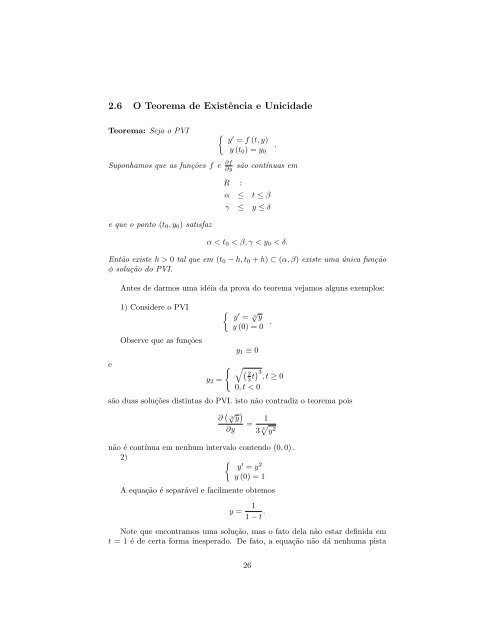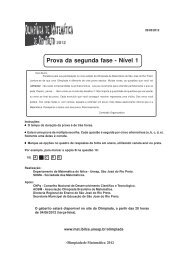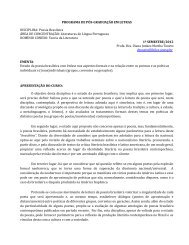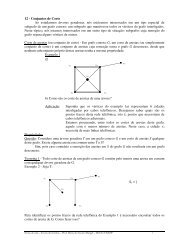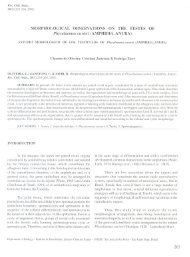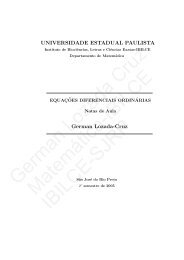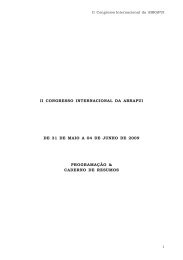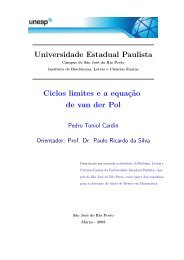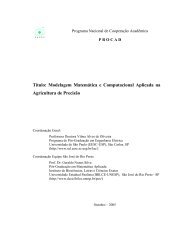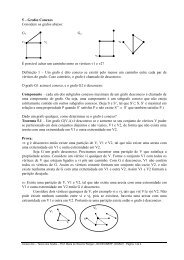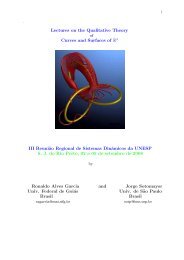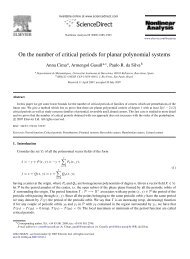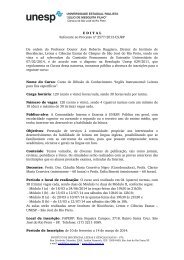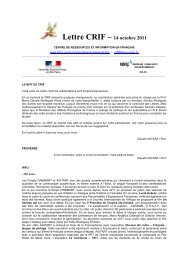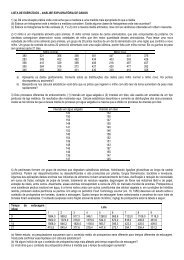Curso de Equações Diferenciais Ordinárias - Unesp
Curso de Equações Diferenciais Ordinárias - Unesp
Curso de Equações Diferenciais Ordinárias - Unesp
You also want an ePaper? Increase the reach of your titles
YUMPU automatically turns print PDFs into web optimized ePapers that Google loves.
2.6 O Teorema <strong>de</strong> Existência e Unicida<strong>de</strong><br />
Teorema: Seja o PVI { y ′ = f (t, y)<br />
y (t 0 ) = y 0<br />
.<br />
Suponhamos que as funções f e ∂f<br />
∂y<br />
e que o ponto (t 0 , y 0 ) satisfaz<br />
R :<br />
são contínuas em<br />
α ≤ t ≤ β<br />
γ ≤ y ≤ δ<br />
α < t 0 < β, γ < y 0 < δ.<br />
Então existe h > 0 tal que em (t 0 − h, t 0 + h) ⊂ (α, β) existe uma única função<br />
φ solução do PVI.<br />
Antes <strong>de</strong> darmos uma idéia da prova do teorema vejamos alguns exemplos:<br />
e<br />
1) Consi<strong>de</strong>re o PVI { y ′ = 3√ y<br />
y (0) = 0 .<br />
Observe que as funções<br />
y 2 =<br />
y 1 ≡ 0<br />
{ √ ( 2<br />
3 t) 3<br />
, t ≥ 0<br />
0, t < 0<br />
são duas soluções distintas do PVI. isto não contradiz o teorema pois<br />
∂ ( √ 3<br />
y )<br />
= 1<br />
∂y 3 3√ y 2<br />
não é contínua em nenhum intervalo contendo (0, 0) .<br />
2) {<br />
y ′ = y 2<br />
y (0) = 1<br />
A equação é separável e facilmente obtemos<br />
y = 1<br />
1 − t .<br />
Note que encontramos uma solução, mas o fato <strong>de</strong>la não estar <strong>de</strong>finida em<br />
t = 1 é <strong>de</strong> certa forma inesperado. De fato, a equação não dá nenhuma pista<br />
26


